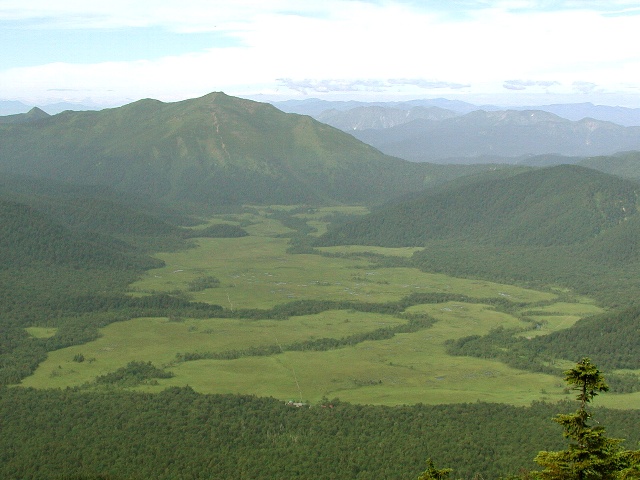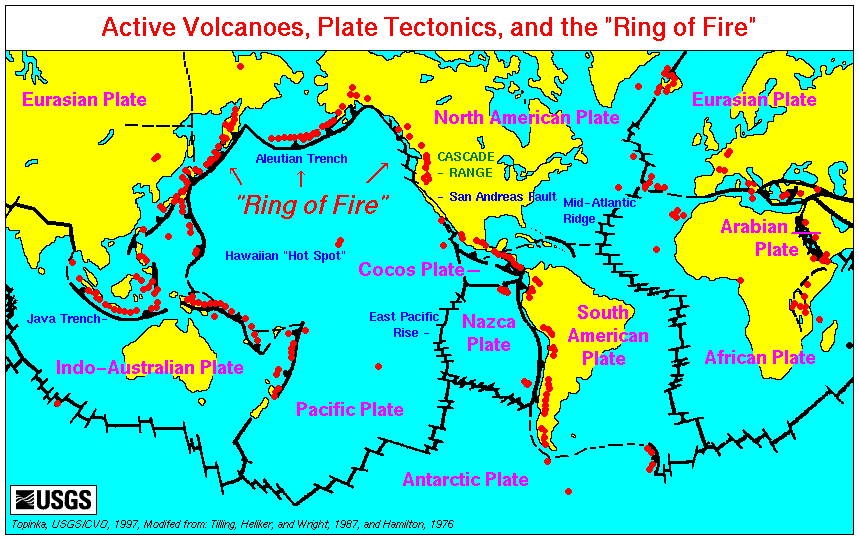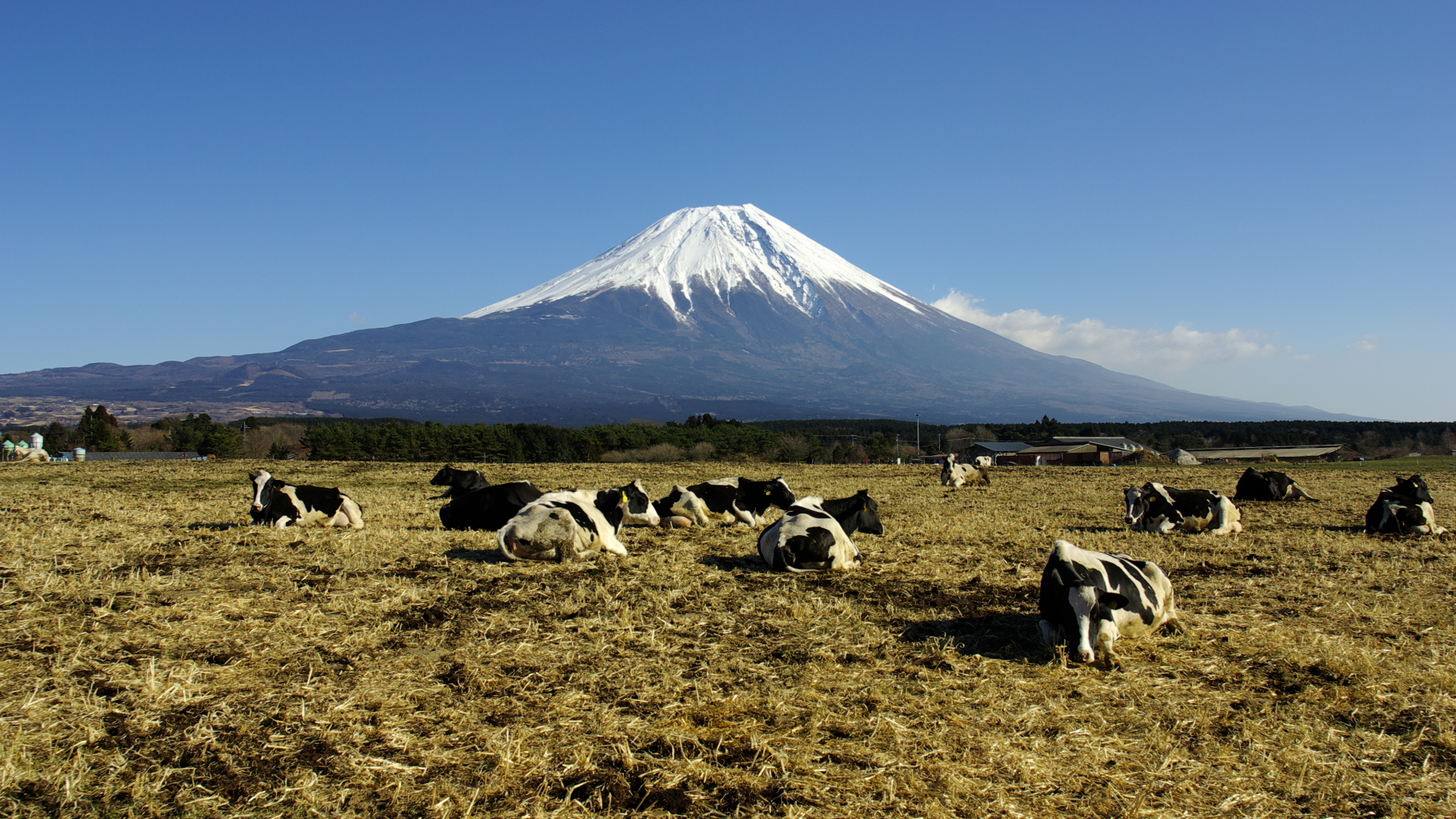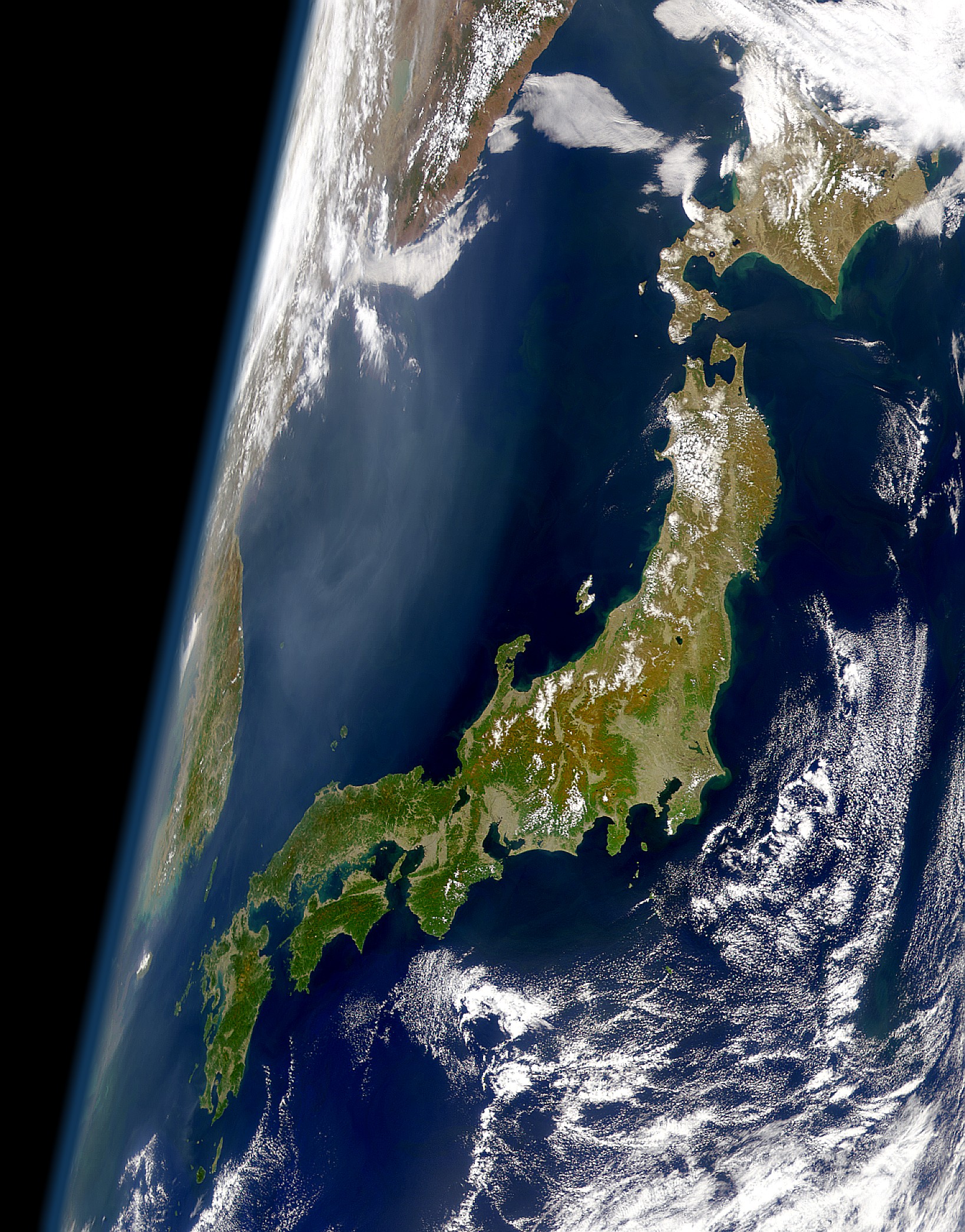|
Hiuchigatake
Mount Hiuchi, also Hiuchigatake () is a 2,356 m tall stratovolcano in Oze National Park, and located in Hinoemata Village, Minami-Aizu gun, Fukushima Prefecture, Japan. This is the highest mountain in Tōhoku region. The volcano rises in the north of . It is one of the 100 Famous Japanese Mountains. Morphology Hiuchi initially formed around 350,000 years ago. Around 160,000–170,000 years ago, Hiuchi erupted, creating a large pyroclastic flow deposit. At the summit of the volcano lie two lava domes, Akanagure (赤ナグレ) and Mi-ike (御池岳). Akanagure, the southern dome, produced a series of viscous lava flows that flowed down the southern and western parts of the volcano about 3500 years ago. Mi-ike is responsible for the only recorded activity. Historic eruptions 1544 eruptions The only recorded activity was on July 28, 1544. A moderate phreatic eruption at the Mi-ike Lava Dome produced lahars and an associated tephra layer. See also * Asteroid ... [...More Info...] [...Related Items...] OR: [Wikipedia] [Google] [Baidu] |
Hinoemata, Fukushima
is a village located in Fukushima Prefecture, Japan. , the village had an estimated population of 556, and a population density of 1.5 persons per km². The total area of the village was . It is locally famous for its soba (buckwheat noodles) and known nationally for its kabuki performances and as a gateway to the Oze marshlands. Geography Located in the southwestern corner of Fukushima prefecture, Hinoemata is surrounded by the mountains Komagatake, Mount Taishaku, and Hiuchigatake (the highest mountain in northwestern Japan). Between these mountains runs the Hinoemata River. It is known for having the lowest population density of any municipality in Japan. * Mountains: Aizu-Komagatake (2133 m), Mount Taishaku (2060 m), Hiuchigatake (2356 m) * Rivers: Hinoemata River * Lakes: Ozegahara Neighboring municipalities * Fukushima Prefecture ** Minamiaizu ** Tadami * Gunma Prefecture ** Katashina * Niigata Prefecture ** Uonuma * Tochigi Prefecture ** Nikkō Climate Hinoemat ... [...More Info...] [...Related Items...] OR: [Wikipedia] [Google] [Baidu] |
Ozegahara
is a high altitude :marshland in the Oze National Park, Japan. Approximately 8 km2 in size, the marshland is well known for various species of plants, including the "mizu-bashō" (White Skunk Cabbage), "Nikkōkisuge" (yellow alpine lilies, ''Hemerocallis dumortieri'' var. ''esculenta'') and "Watasuge" (''Eriophorum vaginatum''). The marshland is a popular hiking destination. File:Hiuchigatake 080923 4.JPG, Ozegahara with Hiuchigatake, Mount Hiuchi File:Ozechitou.jpg, Marsh of Ozegahara File:Mt.Shibutsu 21.jpg, Boardwalk of Ozegahara. :en:Mount Shibutsu, Mount Shibutsu in the background. See also *List of Special Places of Scenic Beauty, Special Historic Sites and Special Natural Monuments References External links National ParkEnglish) - Ministry of the Environment Government of Japan Oze Preservation Foundation (English) {{Coord, 36, 56, 0, N, 139, 14, 0, E, region:JP, display=title Natural monuments of Japan Ramsar sites in Japan, Ozegahara Tourist attra ... [...More Info...] [...Related Items...] OR: [Wikipedia] [Google] [Baidu] |
Oze National Park
, is an area consisting of open greenland in Fukushima, Tochigi, Gunma and Niigata Prefectures in Japan. The park is 372 km2 in area and is the 29th national park in Japan. Opened on 30 August 2007, the park's area includes the marshes (Ozegahara) and the mountains in the Oze area, formerly part of the Nikkō National Park, and other nearby areas including the Aizu-Komagatake and Tashiroyama mountains. The park was the first new national park to open in 20 years, since the designation of Hokkaidō's Kushiro wetlands as a national park in 1987. , ''Japan News Review'', 11 August 2007, retrieved 30 August 2007 In Gunma's , Oze Na ... [...More Info...] [...Related Items...] OR: [Wikipedia] [Google] [Baidu] |
Active Volcanoes
An active volcano is a volcano that is currently erupting, or has the potential to erupt in the future. Conventionally it is applied to any that have erupted during the Holocene (the current geologic epoch that began approximately 11,700 years ago). A volcano that is not currently erupting but could erupt in the future is known as a dormant volcano. Volcanoes that will not erupt again are known as extinct volcanoes. Overview There are 1,350 potentially active volcanoes around the world, 500 of which have erupted in historical time. Many active volcanoes are located along the Pacific Rim, also known as the Pacific Ring of Fire. An estimated 500 million people live near active volcanoes. ''Historical time'' (or recorded history) is another timeframe for ''active''. The span of recorded history differs from region to region. In China and the Mediterranean, it reaches back nearly 3,000 years, but in the Pacific Northwest of the United States and Canada, it reaches back less tha ... [...More Info...] [...Related Items...] OR: [Wikipedia] [Google] [Baidu] |
100 Famous Japanese Mountains
is a book written in 1964 by Mountaineering, mountaineer and author Kyūya Fukada.Hyakumeizan, Hiking Japan! . Japan Gazetteer. Accessed June 27, 2008. The list has been the topic of NHK documentaries, and other hiking books. An English edition, ''One Hundred Mountains of Japan'', translated by Martin Hood, was published in 2014 by the University of Hawaii Press (). The complete list (sorted into Regions of Japan, regions from northeast to southwest) is below. History Selections of celebrated mountains have been produced since the Edo period. Tani Bunchō praised 90 mountains in 日本名山図会 (''A collection of maps and pictures of famous Japanese mountains''), but among these were included such small mountains as Mount Asama in Ise, Mie, and Mount Nokogiri (Chiba), Mount Nokogir ...[...More Info...] [...Related Items...] OR: [Wikipedia] [Google] [Baidu] |
List Of Volcanoes In Japan
This is a list of active and extinct volcanoes in Japan. An Orange background indicates a volcano considered active by the Japan Meteorological Agency. Hokkaido Honshū Izu Islands Ogasawara Archipelago The Ogasawara Archipelago include the Bonin Islands and Volcano Islands. Kyūshū Ryūkyū Islands See also * Notes and references Notes References External links Quaternary Volcanoes of Japan- Geological Survey of Japan - Geological Survey of Japan * ttp://www.data.jma.go.jp/svd/vois/data/tokyo/STOCK/souran_eng/souran.htm The National Catalogue of the Active Volcanoes in Japan- Japan Meteorological Agency 日本の主な山岳標高 (Elevation of Principal Mountains in Japan)- Geospatial Information Authority of Japan {{Asia topic, List of volcanoes in Japan Lists of coordinates Volcanoes A volcano is commonly defined as a vent or fissure in the crust of a planetary-mass object, such as Earth, that allows hot lava, volcanic ash, ... [...More Info...] [...Related Items...] OR: [Wikipedia] [Google] [Baidu] |
Honshu
, historically known as , is the largest of the four main islands of Japan. It lies between the Pacific Ocean (east) and the Sea of Japan (west). It is the list of islands by area, seventh-largest island in the world, and the list of islands by population, second-most populous after the list of islands of Indonesia, Indonesian island of Java. Honshu had a population of 104 million , constituting 81.3% of the entire population of Japan, and mostly concentrated in the coastal areas and plains. Approximately 30% of the total population resides in the Greater Tokyo Area on the Kantō Plain. As the historical center of Japanese cultural and political power, the island includes several past Japanese capitals, including Kyoto, Kyōto, Nara (city), Nara, and Kamakura. Much of the island's southern shore forms part of the Taiheiyō Belt, a megalopolis that spans several of the Japanese islands. Honshu also contains Japan's highest mountain, Mount Fuji, and its largest lake, Lake Biwa. Mo ... [...More Info...] [...Related Items...] OR: [Wikipedia] [Google] [Baidu] |
Tephra
Tephra is fragmental material produced by a Volcano, volcanic eruption regardless of composition, fragment size, or emplacement mechanism. Volcanologists also refer to airborne fragments as pyroclasts. Once clasts have fallen to the ground, they remain as tephra unless hot enough to fuse into pyroclastic rock or tuff. When a volcano explodes, it releases a variety of tephra including ash, cinders, and blocks. These layers settle on the land and, over time, sedimentation occurs incorporating these tephra layers into the geologic record. Tephrochronology is a geochronological technique that uses discrete layers of tephra—volcanic ash from a single eruption—to create a chronological framework in which Paleoecology, paleoenvironmental or Archaeology, archaeological records can be placed. Often, when a volcano explodes, biological organisms are killed and their remains are buried within the tephra layer. These fossils are later dated by scientists to determine the age of the ... [...More Info...] [...Related Items...] OR: [Wikipedia] [Google] [Baidu] |
National Parks Of Japan
National may refer to: Common uses * Nation or country ** Nationality – a ''national'' is a person who is subject to a nation, regardless of whether the person has full rights as a citizen Places in the United States * National, Maryland, census-designated place * National, Nevada, ghost town * National, Utah, ghost town * National, West Virginia, unincorporated community Commerce * National (brand), a brand name of electronic goods from Panasonic * National Benzole (or simply known as National), former petrol station chain in the UK, merged with BP * National Book Store, a bookstore and office supplies chain in the Philippines * National Car Rental, an American rental car company * National Energy Systems, a former name of Eco Marine Power * National Entertainment Commission, a former name of the Media Rating Council * National Motor Vehicle Company, Indianapolis, Indiana, USA 1900–1924 * National Radio Company, Malden, Massachusetts, USA 1914–1991 * National Supermarke ... [...More Info...] [...Related Items...] OR: [Wikipedia] [Google] [Baidu] |
Stratovolcanoes Of Japan
A stratovolcano, also known as a composite volcano, is a typically conical volcano built up by many alternating layers (strata) of hardened lava and tephra. Unlike shield volcanoes, stratovolcanoes are characterized by a steep profile with a summit crater and explosive eruptions. Some have collapsed summit craters called calderas. The lava flowing from stratovolcanoes typically cools and solidifies before spreading far, due to high viscosity. The magma forming this lava is often felsic, having high to intermediate levels of silica (as in rhyolite, dacite, or andesite), with lesser amounts of less viscous mafic magma. Extensive felsic lava flows are uncommon, but can travel as far as 8 km (5 mi). The term ''composite volcano'' is used because strata are usually mixed and uneven instead of neat layers. They are among the most common types of volcanoes; more than 700 stratovolcanoes have erupted lava during the Holocene Epoch (the last 11,700 years), and many older, no ... [...More Info...] [...Related Items...] OR: [Wikipedia] [Google] [Baidu] |
Japan Meteorological Agency
The Japan Meteorological Agency (JMA; ''気象庁, Kishō-chō'') is a division of the Ministry of Land, Infrastructure, Transport and Tourism dedicated to the Scientific, scientific observation and research of natural phenomena. Headquartered in Minato, Tokyo the government agency, agency collects data on meteorology, hydrology, seismology, volcanology, and other related fields. The JMA is responsible for collecting and disseminating weather data and Forecasting, forecasts to the public, as well as providing specialized information for aviation and Marine weather forecasting, marine sectors. Additionally, the JMA issues warnings for volcanic eruptions and is integral to the nationwide Earthquake Early Warning (Japan), Earthquake Early Warning (EEW) system. As one of the Regional Specialized Meteorological Centers designated by the World Meteorological Organization (WMO), the JMA also Forecasting, forecasts, Tropical cyclone naming, names, and distributes warnings for tropical ... [...More Info...] [...Related Items...] OR: [Wikipedia] [Google] [Baidu] |
List Of Mountains In Japan
A list is a set of discrete items of information collected and set forth in some format for utility, entertainment, or other purposes. A list may be memorialized in any number of ways, including existing only in the mind of the list-maker, but lists are frequently written down on paper, or maintained electronically. Lists are "most frequently a tool", and "one does not ''read'' but only ''uses'' a list: one looks up the relevant information in it, but usually does not need to deal with it as a whole".Lucie Doležalová,The Potential and Limitations of Studying Lists, in Lucie Doležalová, ed., ''The Charm of a List: From the Sumerians to Computerised Data Processing'' (2009). Purpose It has been observed that, with a few exceptions, "the scholarship on lists remains fragmented". David Wallechinsky, a co-author of '' The Book of Lists'', described the attraction of lists as being "because we live in an era of overstimulation, especially in terms of information, and lists help us ... [...More Info...] [...Related Items...] OR: [Wikipedia] [Google] [Baidu] |







